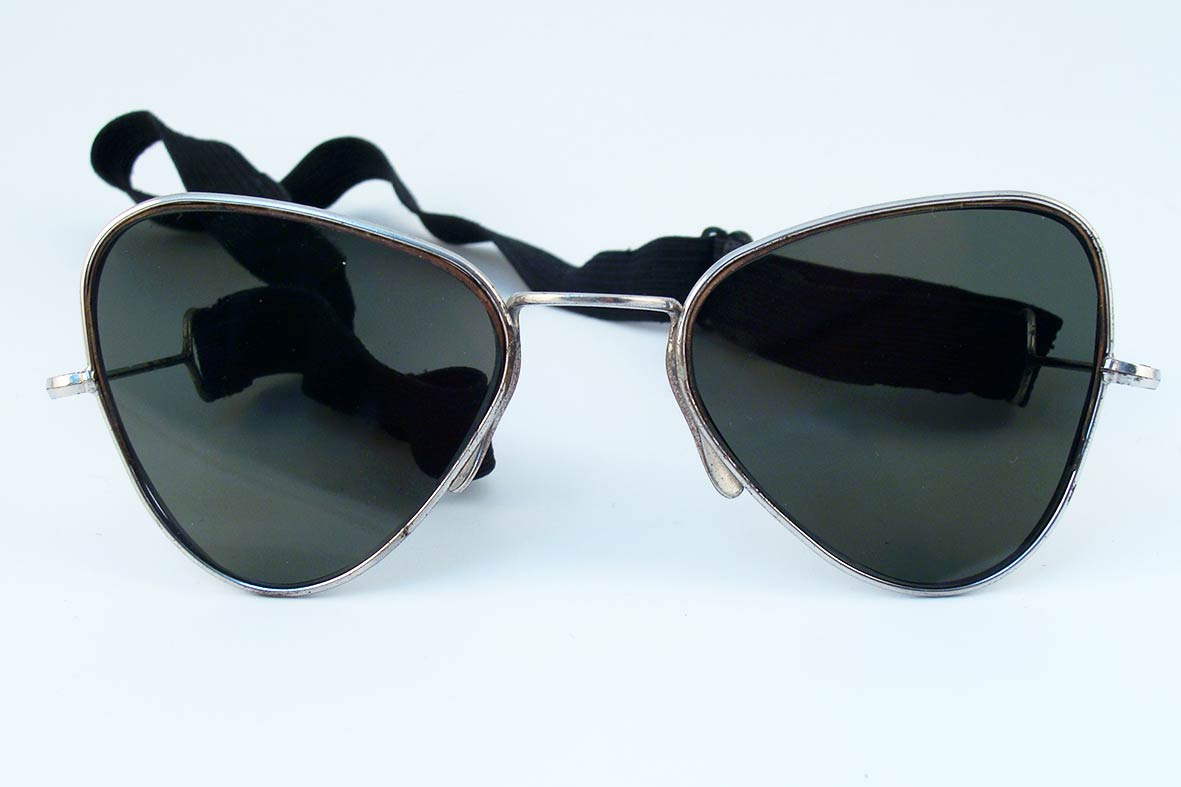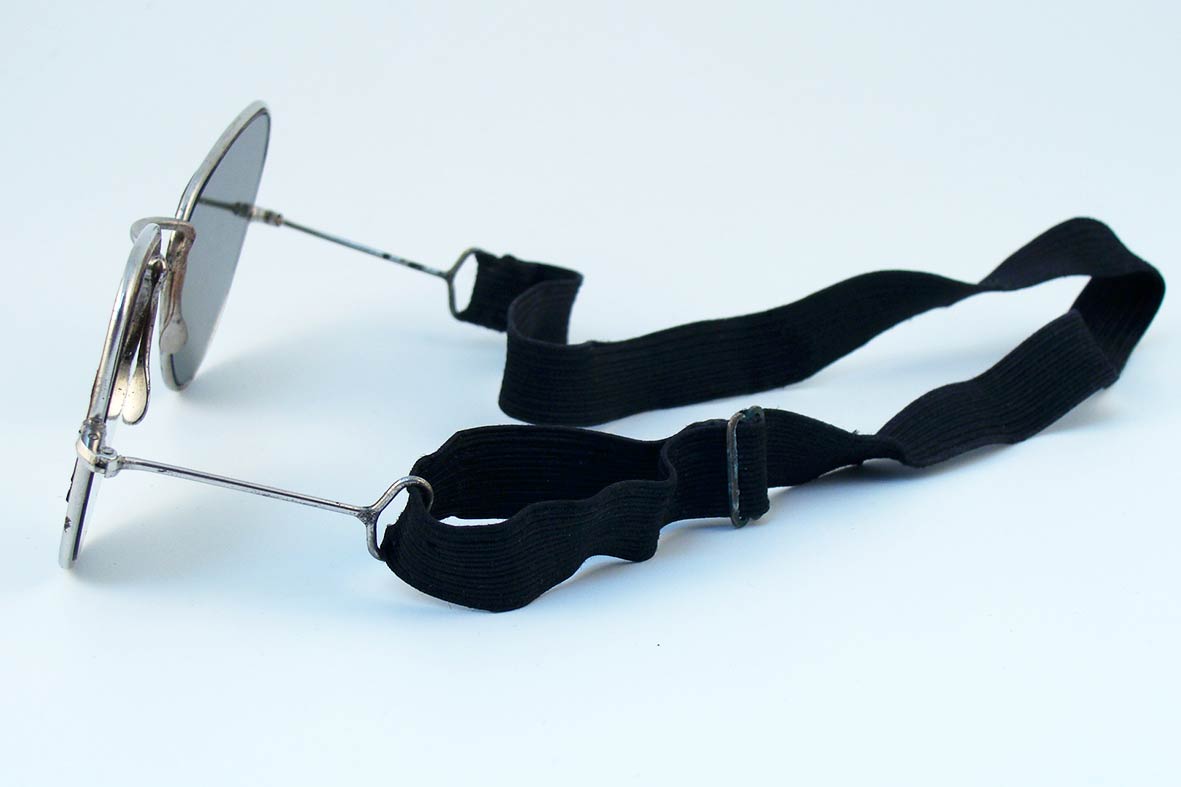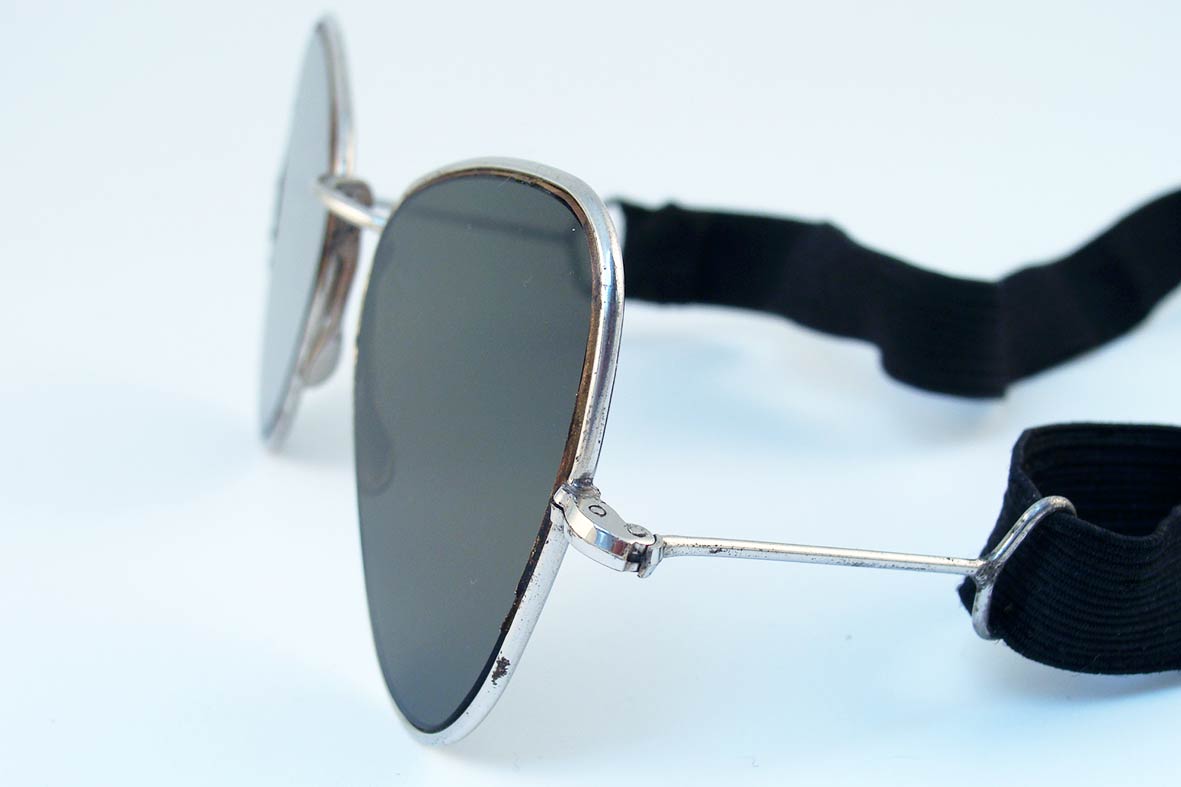|

|
product code : k5459 :
£ 185
-
1930s/40s silver metal frame, unmarked
-
Original grey mineral glass sun lenses
condition
size
lens spec
other info
-
Theodore Hamblin was actually the 'nom de lunette' of Gerald Henry Wingate
- although there was a Hamblin in the original business founded in 1909, he
had retired by 1913 and the business taken over by Wingate. Note too that
Hamblin Glacier in Antarctica was named by the UK Antarctic Place-Names
Committee in 1959 for Theodore Hamblin (1890-1952) "an English optician
who in the 1930s helped in the evolution of the first satisfactory snow goggle
design." But that is G. H. Wingate. And these goggle-spectacles we believe
have their origin in the 30's with Wingate's 'Sports Spectacles' based on his
'Full Field' design.
The British Optical Museum hold Hamblin's original drawings
and advertisements relating to these metal-framed sun spectacles for all sports
which offered a full field of vision and had the same triangular shape metal frame,
but with curl arms. It seems that when WW2 broke out, Wingate adapted this
tyle for the military - short temples had an adjustable black elastic band that
could go under or over helmets, hoods and masks, and could also fold easily
into the issue carrying tin - which we do not have. This pair is also missing
fabric shields at the sides of the glasses, which may have been bothersome,
or the R.A.F. pilot may have removed them in order to see at the sides.
These British WW2 military sun glasses are quite rare and were probably for
private purchase - Hamblin made Luxor-type 'Full Field' metal-rimmed clear/
plano goggles (with a band) for private purchase, so these are likely the same.
There is no govt issue arrow mark
on the tin cases either. Not hard to imagine
an officer at Biggin Hill wearing these as the frame is well-made with elements
like the integral nose-pads and its sporty, dedicated shape. An early aviator-
type design. The lenses also provide good protection from glare - to be
expected from the man who made his mark with snow goggles. An innovator,
he also held three Royal Warrants and took out many patents. His last, great
shout may just be these WW2 sunglasses for the RAF. And let's hope there
will always be a Hamblin Glacier there too, in his memory and his great British
eyewear company.
— klasik
|

|

|

|
|
|





